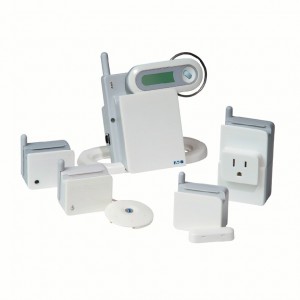The reverse engineering of the Home Heartbeat was accomplished through use of a little monitor program I put together. It runs in your web browser and displays all of the state information of the sensors in real-time. You can see a running demo of the monitor >>>HERE<<<. You can grab a copy of the monitor and its source code here:
Download The Home Heartbeat MonitorThe monitor is written in JavaScript with a little bit of C for communication with the Home Heartbeat Base Station. There are three files which come into play. The first is the web page itself which is named hhb-monitor.html, and it includes another file called miniajax.js. Place these two files in the document directory of your web server. The server-side code is contained in hhb-get.cgi. Place this file in your web server cgi-bin directory. The included copy of hhb-get.cgi is known to work under Linux. It may have to be updated and recompiled for OS-X or Windows.
You will have to have properly installed serial drivers that communicate with the Base Station. If you have not already installed the drivers, then look >>>HERE<<< for assistance.
The code assumes that the device for access to the Base Station is at /dev/hhb. If you wish to use a different device name then edit hhb-get.c and recompile to get a new hhb-get.cgi. Recompilation is as simple as running make.

